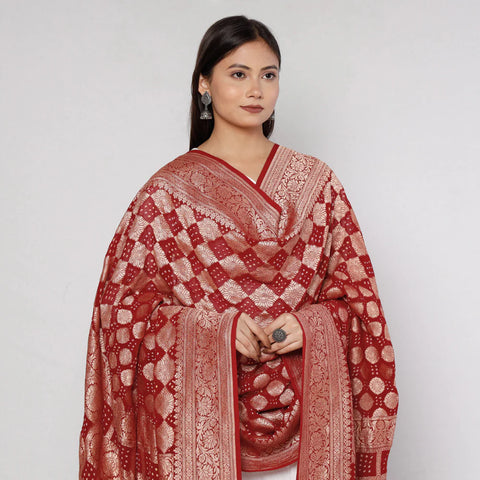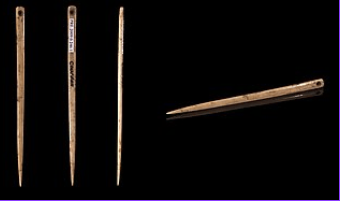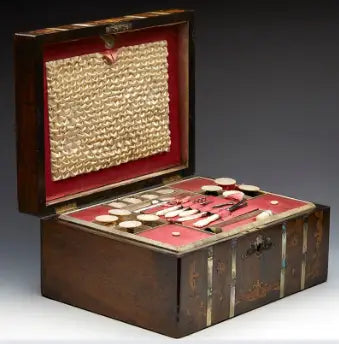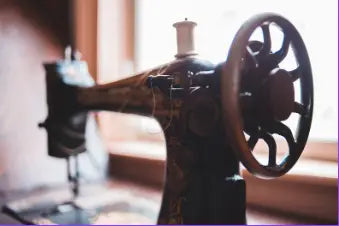Sewing needles have a long and rich history being listed in the world's top greatest inventions of mankind. The very earliest evidence for clothing fabrication comes from an unlikely source: lice. Between 80,000 and 100,000 years ago, head and body lice became separate species which is an indication that individuals started wearing skins. Archaeologists and anthropologists have discovered sewing needles with eyes dating back to 17,500 BC, which were likely made of bone, and used to sew skins and furs. Sewing needles, were one of humankind's first tools. They were used in the upper paleolithic period which began about 40,000 years ago. Its impressive to find how smart humans were at that time that they figured out how to stitch pieces of animal fur together to protect themselves of the cold.
Native Americans were known to use sewing needles from natural sources. One such source, the agave plant, provided both the needle and the "thread". The "needle" is essentially what was the tip end of the leaf. Once the fibres dried, the fibres and "needle" could then be used to sew items together. The early limitation was the ability to produce a small enough hole in a needle matrix, such as a bone sliver, not to damage the material. Traces of this survive in the use of awls to make eyelet holes in fabric by separating rather than cutting the threads.
Sites that yielded eyed bone needles dating
between 45,000 and 25,000 years old
The incredible diversity of needle types, which differed by region, exhibited varied forms, and evolved over time, suggests two things. First, multiple societies created them independently. Second, people within these societies had tools to create different types of garments, which may have had cultural or aesthetic significance. In Western Europe, for instance, where anthropologists believe distinctive groups of humans frequently interacted, needle styles varied by site, suggesting dressing style might have delineated tribal affiliation.
The nineteenth century was the golden age of needle production. At this time needles were cheap enough to be lost in great numbers. Before, people took care of the needles like if they were precious stones or even gold. Women used to protect the needles in special cases attached to their belts. The major break-through in needle-making was the arrival of high-quality steel-making technology from China in the tenth century, principally in Spain in the form of the Catalan furnace, which soon extended to produce reasonably high quality steel in significant volumes. This technology later extended to Germany and France, although not significantly in England. The needle industry shared the nineteenth century's enthusiasm for variety and details of finish, including gold-plated grooves.
The history of the sewing machine is littered with accusations, failed attempts and some serious scandal. From narrowly escaping death to patent law suits, it’s an interesting story that demonstrates the seam-ingly humble sewing machine ruffled more than a few feathers in its infancy. Charles Weisenthal, a German man, was issued a British patent for a “needle that is designed for a machine.” A lot of people came and went coming with new possible designs of sewing machine that could be the right fit. The history of the sewing machine is hence indeed a complicated one, and as a result, many enthusiasts still debate who can claim the title of the real inventor.
Blogs you might also like:
Chopad - The oldest indigenous game of India
Ecokaari - upcycling story
All you need to know about magnificient sarees of Odisha
 Verified Purchase
Verified Purchase








Leave a comment (all fields required)